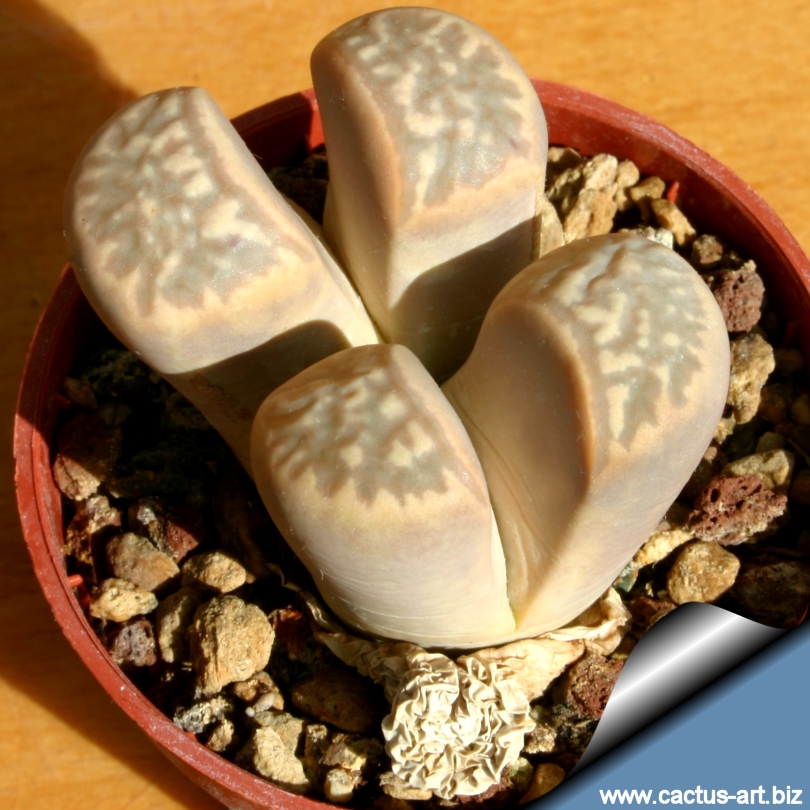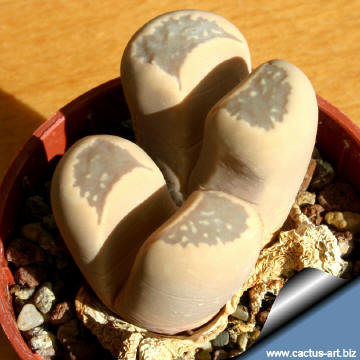|
|
|

The white to pale grey marbled leaves closely mimics
the white quartzite pebbles
of the harsh environment where this plant grows.
|
 |
Description: Lithops marmorata
is a clumping succulent perennials species close related to L.
salicola and L. umdausensis.
Leaves: 2, Inverse-cone-shaped unequal-sized, swollen, separated
by a deep fissure, ovoidal and more o less elonged The new leaves are
opposed with respect to the previous ones and form a right angle with
these. The colour is grey-white or pale grey-green, The upper surfaces
of leaves is convex and quite variable in appearance, it has darker
translucent windows mottled with white with an overall marbled effect.
Flowers: Single glossy white daisy-like that emerges from the
fissure, the flower is as large as the pair of fleshy leaves below (3 cm
in diameter)
Blooming season: From mid-summer through autumn, flowers when
tiny, |
|
Advertising
|
|
|
|
Family: Mesebrianthemaceae (Aizoaceae)
Scientific name:
Lithops
marmorata var. marmorata
(N.E.Brown, 1920) N.E.Brown
Origin:
South Africa (Little Namaqualand)
Habitat: It grows in rocky
environments has white to pale grey leaves and closely mimics the white
quartzite pebbles.
Taxonomic
Synonyms:
-
Mesembryanthemum marmoratum
-
Lithops diutina
-
Lithops framesii
-
Lithops umdausensis
Vernacular Names: Living Stones, Cleft Stones, Living
Rocks, Split Rocks, stone plant
|
|
|
|

New leaves.
|
|
Photo of conspecific taxa, varieties, forms and cultivars of
Lithops
marmorata


|
|